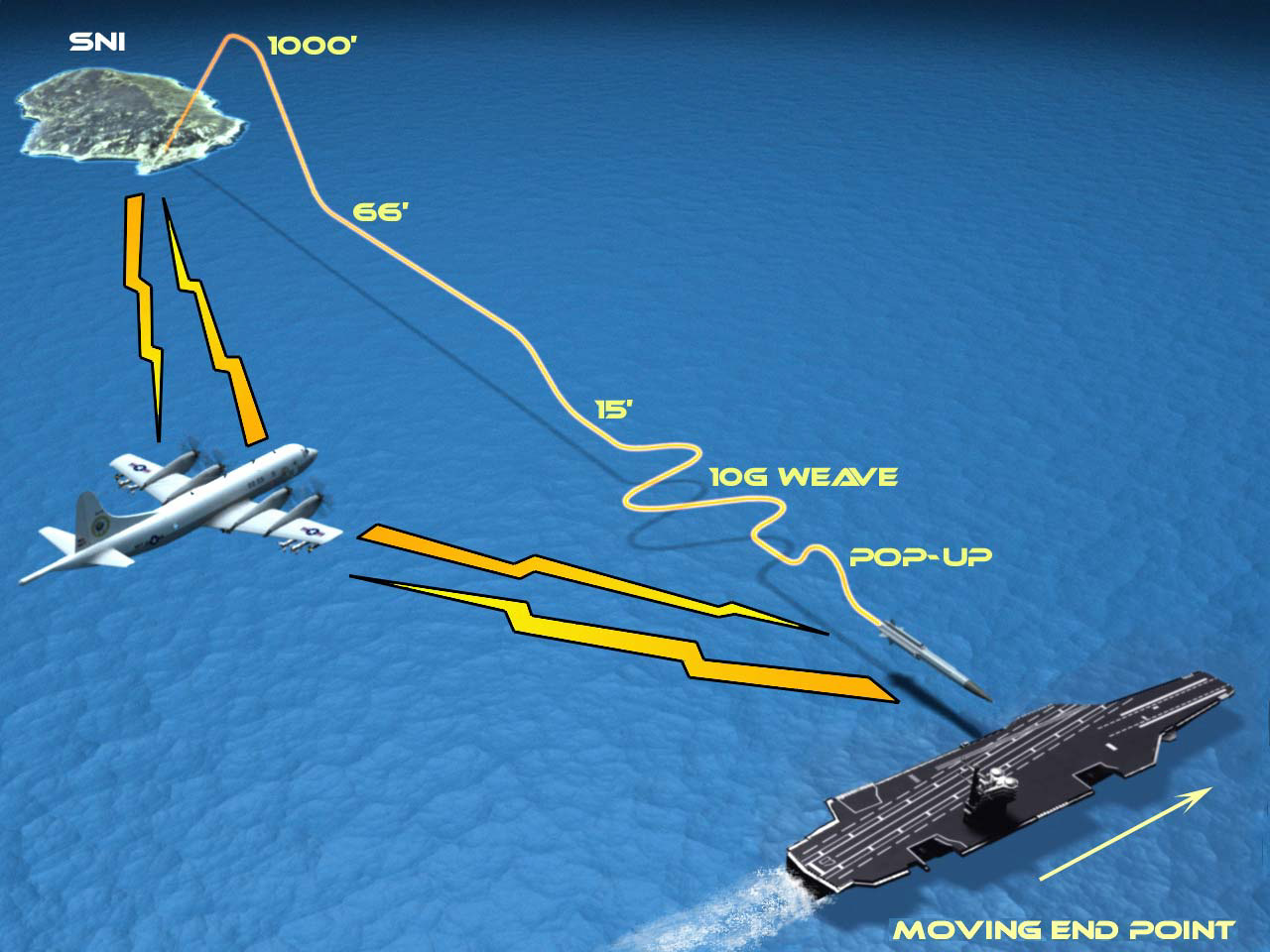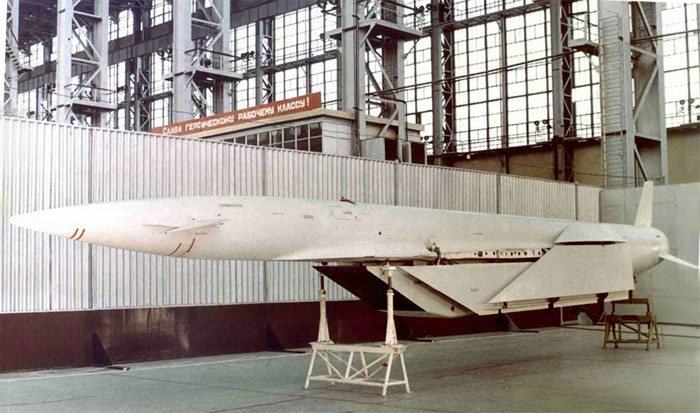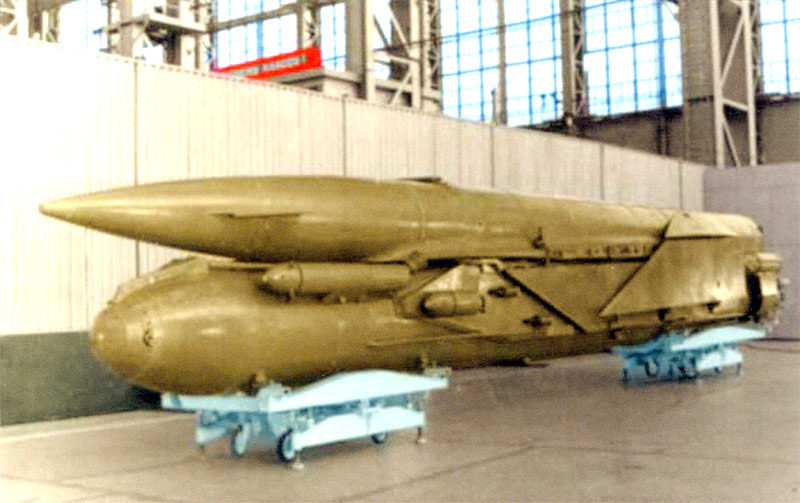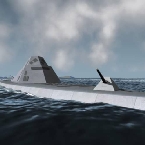AlmightyTallest
Posts: 279
Joined: 2/25/2014
Status: offline

|
quote:
maybe the US Navy always crippled itself by just using harpoons and later tomahawks from ships. western navys were akways behind soviet anti-ship weapons... and rocket tech. soviets were behind in sensor tech.
Well, you have to look at in that they had completely different doctrines which determined the use of missiles at sea. Why waste so much space on a surface ship for huge non-stealthy ASM's when about 50 aircraft from a single carrier could each carry multiple types of smaller and just as deadly missiles further than a surface ship? If you tried a full strike force from a U.S. carrier, you have good jamming capability, a good number of HARM shooters and radar decoy launchers, all supporting the potential waves of subsonic Harpoons which can all be set up differently to each do terminal pop up, or fly straight in, do doglegs, and come in simultaneously on target from different compass directions, etc. No one likes to talk much about the maneuvering ability of a subsonic missile vs a supersonic one, a 10g turn with a 600mph missile is much tighter than a 10g turn with a Mach 3 one for example, which complicates the problem for defensive targeting systems.
quote:
Lets see... the LRASM-A is subsonic (all western designs say highly subsonic to hide the fact its not supersonic) and has a max range of 500 nm (about 930 km) via mk41 VLS. it is really sad. But wait...
The planned LRASM-B is a stealthy ship-launched supersonic variant powered by a ramjet engine to achieve supersonic cruise speed... planned IOC 2020.
in contrast the russian/indian Brahmos ASM is supersonic:
Brahmos - 2.8 Mach - 160 nm range IOC 2005
Brahmos 2 - planned Mach 5 or Mach 7 - Aegis Killer - IOC 2020
also chinese ASMs are supersonic (derived from russian technology)
YJ-12 AShM (supersonic speed at the terminal attack stage) range: up to 400 km IOC 2000
YJ-18 - supersonic Mach 3 - range 220 (119 nm) Aegis-Killer - IOC 2014 Type 052D class destroyer (EMP-Warhead!!)
and the hypersonic CVBG-Killer (anti-access weapon):
DF-21D - 1500 km (810 nm) range - hypersonic Mach 10 - IOC 2012
DF-26 - 3000 km (1620 nm) range - hypersonic Mach 10 - IOC 2016
China DF-21D Anti-Ship Ballistic Missile
https://www.youtube.com/watch?v=p-cEunmqXM8
btw saudi arabia bought DF-3 and D-21 from china for deterrence against iran (cia approved - mrbms have conventional warheads)
ASM resource:
http://www.deagel.com/Anti-Ship-Missiles.htm
also my fav soviet ASMs: P-500 Sandbox, P-700 Shipwreck, P-1000 Vulcan (monster ASMs)
http://en.wikipedia.org/wiki/P-500_Bazalt#P-1000_Vulkan
http://en.wikipedia.org/wiki/P-700_Granit
You seem to be focusing on that just because a missie is faster, that it's automatically better than a subsonic one, but the devil is in the details as they say.
There's a reason U.S. anti-ship missiles are deliberately kept subsonic, and it's not really just because of radar cross section, it's thermal cross section. If I have a relatively low resolution thermal sensor on my ship, and a supersonic missile is heading toward me, Because of the missile's friction with the atmosphere and it's size, I'll see the plume, and can engage, even with radar because it's a huge return I'm getting back. Take a much slower, colder, lower flying and physically smaller missile that is not going Mach 3+ and that same sensor might not see the missile until it's uncomfortably close. Now send that missile in at night, through a storm front in choppy seas and you'll have an even harder time seeing it.
Another deficiency is that almost all the large Russian ASM's rely on radar for terminal homing, putting all the sensor eggs in one basket and using a technology that can be spoofed by chaff, flying Nulka ECM, floating reflective decoys, jammed by airborne and ship borne electron emitters without any other options to target a ship.
http://breakingdefense.com/2014/11/47-seconds-from-hell-a-challenge-to-navy-doctrine/
quote:
The Navy has invested heavily in upgrading the Standard’s capabilities to intercept incoming enemy missiles. Clark wants to repurpose that same high technology as an offensive weapon capable of killing a range of targets, in the air, at sea, and ashore. He notes that the SM-2 variant already has a oft-forgotten anti-surface-target mode and that the Navy’s adding GPS guidance to the latest model, the SM-6, which would potentially let it hit ground targets.
quote:
Supplementing the Sea Sparrows would be jammers. Clark particularly prizes the “Block III” upgrade of the Surface Electronic Warfare Improvement Program (SEWIP), scheduled to enter service around 2017. “That’s one of the things that led me to come up with this idea,” Clark said: We’re going to have great jamming, but under current doctrine, “we’re never going to use it,” because its range is limited to at most 30 nautical miles. If you make your stand at 30 nm, however, you can use electronic warfare against some incoming missiles, leading them so far off-target that you don’t have to fire interceptors at them at all.
There's a reason the U.S. Navy doesn't see much of a need for Mach 4 ASM's, they have the Coyote after all, and train against it since it's a dangerous programmable trainer that simulates the latest supersonic ASM's down to their terminal maneuvers with 10G weaves and terminal pop ups.
http://lkal32.blogspot.com/2012/04/closer-look.html

http://www.defenseindustrydaily.com/gqm163-ssst-a-tricky-coyote-to-match-wits-with-defenses-03155/
Some other good reading: http://www.ausairpower.net/Analysis-Cruise-Missiles.html
http://www.informationdissemination.net/2007/09/basics-of-naval-weapon-technology.html
quote:
When you talk about anti-ship missiles you are ultimately weighing factors in performance, specifically speed vs stealth plus range, guidance, and countermeasures. The debate some attempt to exercise is in determination of which weapons are better and why. What is ironic about the naval weapon technology debate is usually the metrics used by some in their proclamation of a weapon system being better is also the reason why it isn't. When you apply the wrong metrics, that can happen. Lets start by comparing supersonic vs subsonic missiles.
The advantage supersonic missiles have over subsonic missiles is speed. The greater the speed of the missile the less the engagement window exists to intercept the missile. The disadvantage of speed is that detection is made much easier, particularly via IR (although there are other methods). In other words, the advantage of supersonic missiles to reduce the engagement window ends up ultimately being negated because the missiles are easier to detect, thus easier to intercept.
The advantage subsonic missiles have over supersonic missiles is stealth. The greater the stealth of a missile the more difficult it is to detect and intercept. The disadvantage of subsonic missiles is that the engagement window is bigger due to its reduced speed. It is noteworthy that since 1982 that most subsonic anti-ship missiles that weren't detected at launch have effectively hit its target, and oh btw, most were not detected at launch. Unfortunately for supersonic missiles, modern detection systems are very apt in detecting the enormous signature generated when launching a supersonic weapon at sea.
Guidance is also critical. The best weapon systems utilize multiple options for guidance in a weapon system, whether it is IR, radar, GPS, Inertial, etc.., the more options for guidance the more effective the weapon system. There are various decoys and electronic warfare options for non kinetic defense against simplistic guidance systems, which is why it is becoming more common to see more complicated guidance capabilities on weapons.
Applying these basics, it becomes easy to debunk myths propagated in articles like the defense update article. For example, the SS-N-22 Sunburn (a.k.a. 3M-82 Moskit a.k.a. P270 Moskit) is the most overrated anti-ship missile you will ever read about. First, it is easily detected not only via IR but by its radar system. The missile has virtually no stealth at all. The missile only has radar guidance, making it easier to defeat without kinetic intercept, and finally the Sunburn has a very limited range and has no countermeasures. In other words, in the various technical categories that determine whether the weapon used to evaluate the capability of a weapon technology, the Sunburn ranks kindof low in each category but speed.
Compare the Sunburn to the latest Exocet missiles. The Exocet has inertial guidance that helps prevent jamming, the missile has protection from EW, it has more than twice the range of the Sunburn, and it has excellent stealth.
http://www.readcube.com/articles/10.1111/j.1559-3584.1997.tb01931.x
quote:
The paper reviews the advantages and disadvantages of supersonic speed for the antiship missile application. Specifically, the supersonic speed benefits of reduced defensive reaction time and relaxed navigation accuracy are contrasted against limitations of range, payload, cost, electronic counter counter-measures performance, and signature. The paper concludes that, for the immediate future, subsonic advantages are likely to continue to outweigh the two major supersonic benefits. This view is reflected in the current lack of development being applied to supersonic antiship missiles.
detection range for Thales sirius is quoted as follows:
supersonic seaskimmer: 26,5 km
subsonic seaskimmer: 12 km
(tropical summer conditions)
source: world naval weapons systems
So a generic subsonic missile basically cuts the detection range by a little more than half on a Western Thermal dual band sensor in the above example.
http://www.thales7seas.com/flash/files/SIRIUS_HR.pdf
< Message edited by AlmightyTallest -- 1/29/2015 12:18:53 AM >
|
 Printable Version
Printable Version
















 New Messages
New Messages No New Messages
No New Messages Hot Topic w/ New Messages
Hot Topic w/ New Messages Hot Topic w/o New Messages
Hot Topic w/o New Messages Locked w/ New Messages
Locked w/ New Messages Locked w/o New Messages
Locked w/o New Messages Post New Thread
Post New Thread